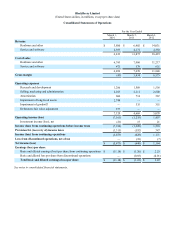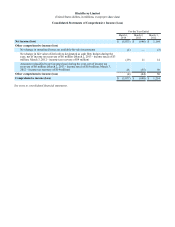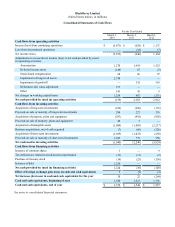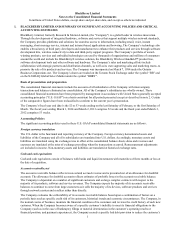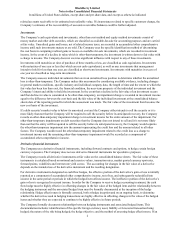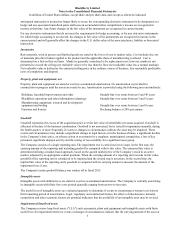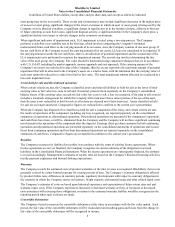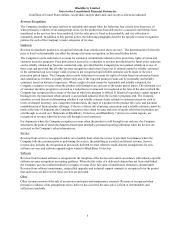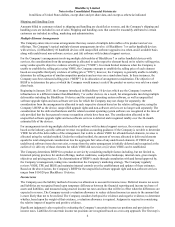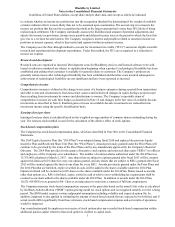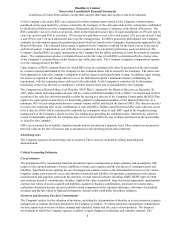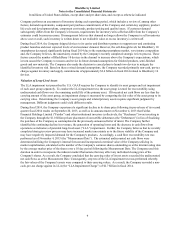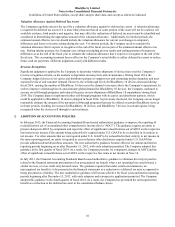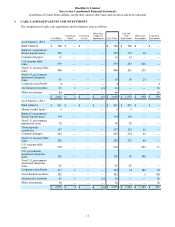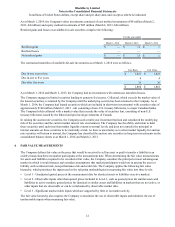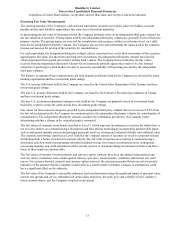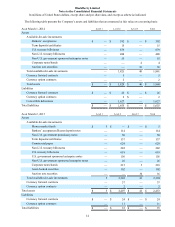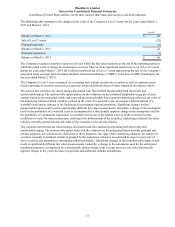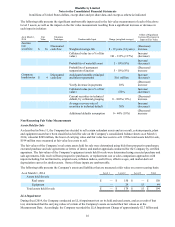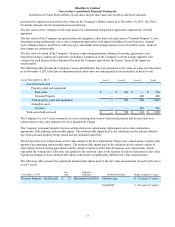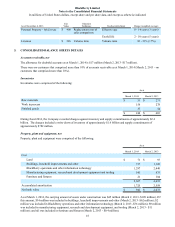Blackberry 2014 Annual Report Download - page 97
Download and view the complete annual report
Please find page 97 of the 2014 Blackberry annual report below. You can navigate through the pages in the report by either clicking on the pages listed below, or by using the keyword search tool below to find specific information within the annual report.BlackBerry Limited
Notes to the Consolidated Financial Statements
In millions of United States dollars, except share and per share data, and except as otherwise indicated
8
At the Company’s discretion, RSUs are redeemed for either common shares issued by the Company, common shares
purchased on the open market by a trustee selected by the Company or the cash equivalent on the vesting dates established
by the Board of Directors or the Compensation, Nomination and Governance Committee of the Board of Directors. The
RSUs generally vest over a three-year period, either on the third anniversary date, in equal installments or 25% per year in
years one and two and 50% in year three, 50% in year two and three or over a five-year period, 25% per year in year 3 and
4 and 50% in year 5 on each anniversary date over the vesting period. For RSUs granted on performance, the Company
estimates its achievement against the performance goals which are based on the Company’s business plan approved by the
Board of Directors. The estimated achievement is updated for the Company’s outlook for the fiscal year as at the end of
each fiscal quarter. Compensation cost will only be recognized to the extent that performance goals are achieved. The
Company classifies RSUs as equity instruments as the Company has the ability and intent to settle the awards in common
shares. The compensation expense is calculated based on the fair value of each RSU as determined by the closing value
of the Company’s common shares on the business day of the grant date. The Company recognizes compensation expense
over the vesting period of the RSU.
Upon issuance of RSUs common shares for which RSUs may be exchanged will either be purchased on the open market
by a trustee selected and funded by the Company or new common shares will be issued by the Company. The trustee has
been appointed to settle the Company’s obligation to deliver shares to individuals upon vesting. In addition, upon vesting,
the trustee is required to sell enough shares to cover the individual recipient’s minimum statutory withholding tax
requirement, with the remaining shares delivered to the individual. As the Company is considered to be the primary
beneficiary of the trust, the trust is considered a variable interest entity and is consolidated by the Company.
The Company has a Deferred Share Unit Plan (the “DSU Plan”), adopted by the Board of Directors on December 20,
2007, under which each independent director will be credited with Deferred Share Units (“DSUs”) in satisfaction of all or
a portion of the cash fees otherwise payable to them for serving as a director of the Company. Grants under the DSU Plan
replace the stock option awards that were historically granted to independent members of the Board of Directors. At a
minimum, 60% of each independent director’s annual retainer will be satisfied in the form of DSUs. The director can elect
to receive the remaining 40% in any combination of cash and DSUs. Within a specified period after such a director ceases
to be a director, DSUs will be redeemed for cash with the redemption value of each DSU equal to the weighted average
trading price of the Company’s shares over the five trading days preceding the redemption date. Alternatively, subject to
receipt of shareholder approval, the Company may elect to redeem DSUs by way of shares purchased on the open market
or issued by the Company.
DSUs are accounted for as liability-classified awards and are awarded on a quarterly basis. These awards are measured at
their fair value on the date of issuance and re-measured at each reporting period until settlement.
Advertising costs
The Company expenses all advertising costs as incurred. These costs are included in selling, marketing and
administration.
Critical Accounting Estimates
Use of estimates
The preparation of the consolidated financial statements requires management to make estimates and assumptions with
respect to the reported amounts of assets, liabilities, revenues and expenses and the disclosure of contingent assets and
liabilities. Significant areas requiring the use of management estimates relate to the determination of reserves for various
litigation claims, provisions for excess and obsolete inventories and liabilities for purchase commitments with contract
manufacturers and suppliers, provisions for warranty, revenue related estimates including VSOE, BESP, right of return
and customer incentive commitments, royalties, implied fair value of goodwill, long-lived asset impairment, amortization
expense, fair values of assets acquired and liabilities assumed in business combinations, provision for income taxes,
realization of deferred income tax assets and the related components of the valuation allowance, allowance for doubtful
accounts, and the fair values of financial instruments. Actual results could differ from these estimates.
Inventory and Inventory Purchase Commitments
The Company’s policy for the valuation of inventory, including the determination of obsolete or excess inventory, requires
management to estimate the future demand for the Company’s products. Inventory purchases and purchase commitments
are based upon such forecasts of future demand and scheduled rollout and life cycles of new products. The business
environment in which the Company operates is subject to rapid changes in technology and customer demand. The


